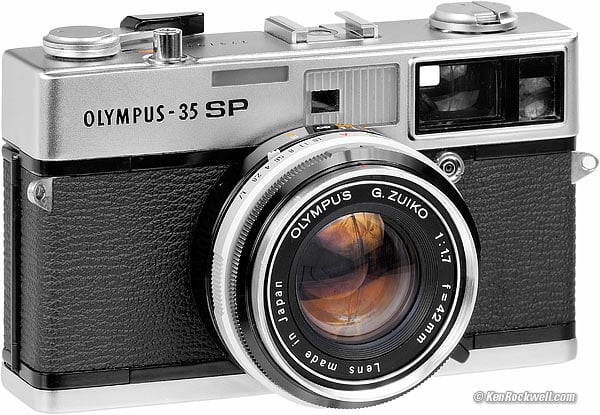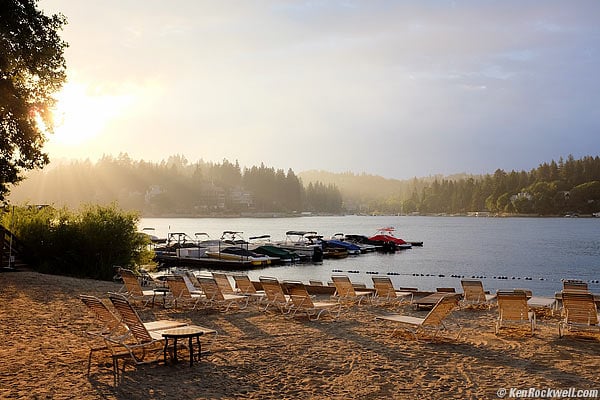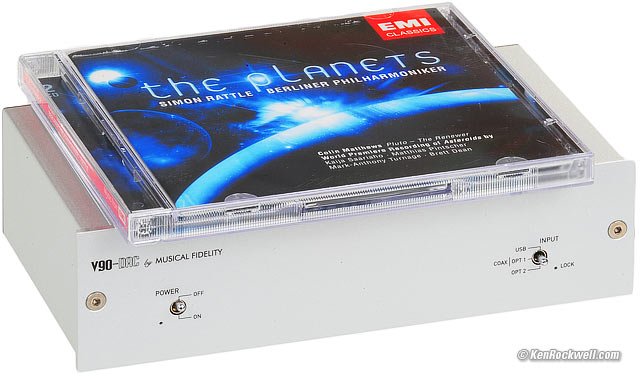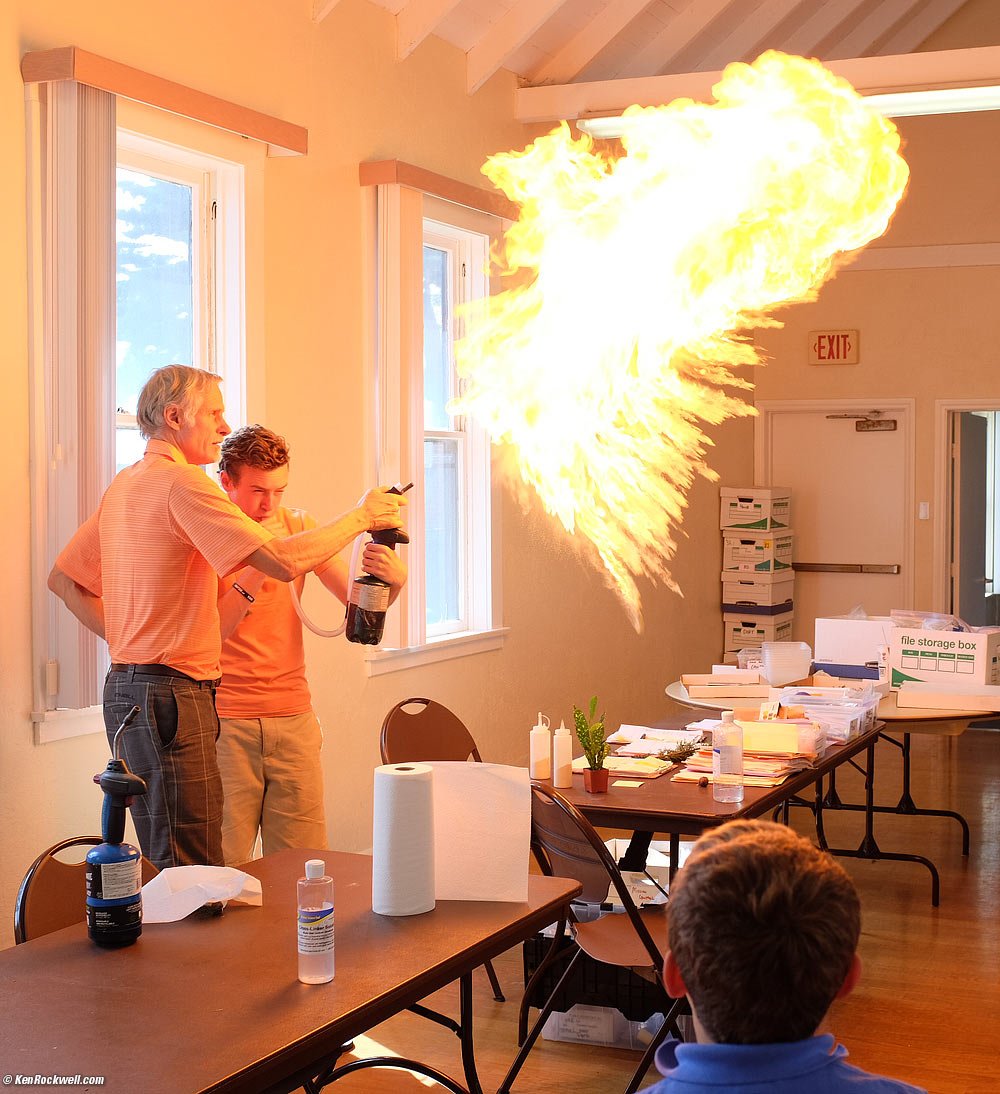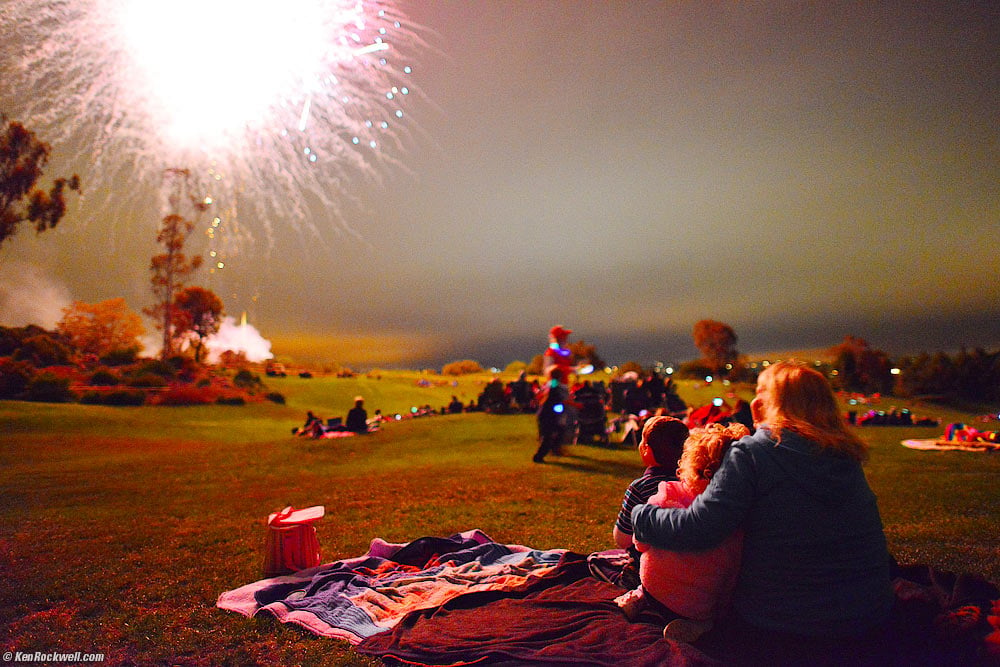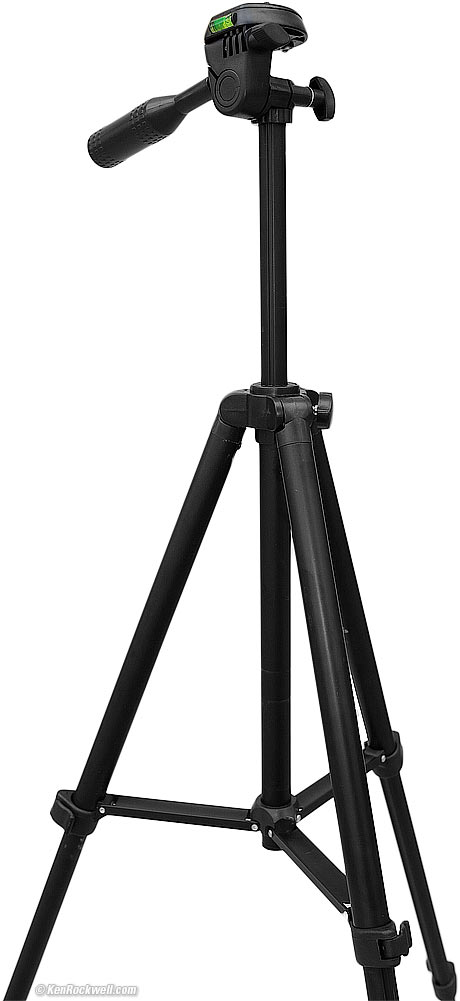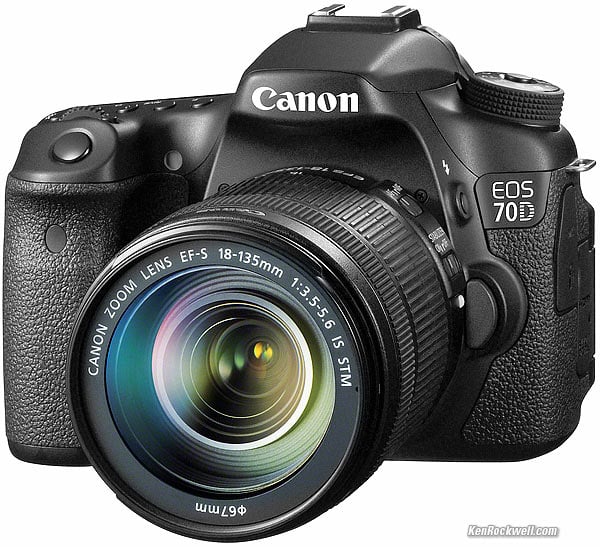Home Donate Search Gallery Reviews How-To Books Links Workshops About Contact
July 2013's Updates Hot Deals
RSS: daily (continuous live updates)
all © 2012-2013 KenRockwell.com. All rights reserved.
Nikon: D800 D600 D7100 Canon: 5D Mk III 6D Fuji LEICA All Ryan Katie
Recommended Cameras How to Take Better Pictures random
Twitter Facebook Video Tutorials
|
Adorama pays top dollar for your used gear. I use Adorama, Amazon, eBay, B&H, J&R and ScanCafe. I can't vouch for ads below.
|
31 July 2013, Wednesday
Olympus 35 SP/Fuji 400H Sample Images
Olympus 35 SP.
I added some images from Olympus 35 SP as shot on Fuji 400H on Ryan's and on Katie's websites.
I've been having too much fun shooting my 35 SP to complete its review, heh heh.
Fuji X100S Prophylactic Filter
I just got the best UV filter there is, the nearly bulletproof, ultra-multicoated Hoya HD2 UV 49mm filter for my Fuji X100S. (You need some kind of an adapter to use filters on the X100S; I use an empty 49mm filter ring.)
The X100S and X100 need a multicoated filter, otherwise I get ghost images when used with regular or single-coated filters. Bright highlights reflect from the sensor, off the back of most filters and back onto the sensor. With this ultra-multicoated filter, I ought to get the best results.
For example, I used a single-coated CONTAX P-Filter on this night shot last week. You will see two green trapezoids on the right side of the roof. They are ghosts from the two parking lot lights exactly 180º opposite the center of the image! A better filter will greatly attenuate these.
Not only does the HD2 have an extremely efficient multicoating with less reflection than any other filter I've seen, it's also supposed to be dirt and water and fingerprint resistant, and be very resistant to physical damage. Hoya demonstrates these by hitting them with a hammer.
I won't beat on mine with a hammer, and it does seem like the best prophylactic filter available at any price.
Fuji X100S versus Olympus 35 SP
The two look and feel like the same camera. One's digital and one shoots 35mm. The Fuji X100S is so advanced that very few people can get them yet; they're brand-new and require a short wait, while the Olympus 35 SP was hugely popular — 40 years ago — and easy to get today.
With both cameras, every shot is sharp and well exposed.
The biggest difference is that the 35 SP is faster for actual shooting! The X100S is state-of-the-art for a mirrorless digital camera, but let's be honest; the 35 SP has zero shutter lag and doesn't even need a power switch. Bring the 35 SP to your eye, flick the focus (or prefocus by feel) and fire! The X100S still requires a moment to wake from sleep and a moment to focus — sometimes enough to miss something.
When I look at my shots, yes the X100S is technically cleaner and sharper than the state-of-the-art ISO 400 print film I've been shooting in my 35 SP, but so what: with my 35 SP, I'm getting a lot more keepers because I'm never distracted by or waiting for my camera to catch up with me. ASA 400 print film is grainier, but at least I always get my shot, which is by far the most important thing.
Therefore, I'm taking better pictures with my 35 SP. With a 35mm rangefinder camera, nothing gets between my and my pictures — not even a power switch. Power switches are a big problem if they get knocked and turn off by accident, as they can (and do) on my digital Nikon DSLRs. The X100S finder diopter gets knocked, too, while the 35 SP just goes with nothing ever needing to be tweaked.
The X100S is the world's best digital camera, but it's still digital. It's not the world's best camera, just the world's best digital camera. (see Weasel Words.) The X100S may take a moment to wake from sleep, but once awake, it's faster than any other digital camera because the first shot always hits dead-on for focus, exposure, flash fill, color and white balance, something DSLRs and other cameras often require a shot or two and looking at the LCD to refine. If you've got to look at an LCD to be sure you're set perfectly, you'll lose loads of shots every time the light changes; which is all the time.
C-41 Lab Test
I took three rolls of Fuji 400H from the same pro-pack, shot them in the same camera and sent them to three different labs to process and scan. One lab cost $4.87 including the CD with the scans, one lab cost about $18 and the third pro lab in Hollywood cost about $40.
Oddly, I think I got the best results from the $4.87 lab!
The $4.87 lab is Costco on Heather Ridge Road in Laguna Niguel, Orange County, California while I was on vacation. (I didn't try the other Costco in Laguna Niguel.)
I'll share the results when I get to looking at them in more detail, but that will take a while. Of course with C-41, the colors never match; that's why I shoot slides when I need the right colors. Every C-41 roll will look different, so if I tried the same devious three-way test again, the results might be very different — but if you're around south Orange County and can walk-in to that Costco, you've got a great lab for C-41. Not only is Costco inexpensive and good, they imprinted the photos on the label of the CD so I can see what's on it without a computer, and did the whole job in only an hour or two!
Power Amplifier Deal
Musical Fidelity just dumped the price of their M1PWR from $1,200 to $499.
It's a Hi-Fi stereo 65 WPC basic power amplifier that's unique in having very small size and power draw, while offering Hi-Fi performance. I'm trying to get one to review; It offers more power in less space with less heat than just about anything else in the Hi-Fi world, making it ideal for places like my office that gets too hot from all the equipment I have in it, as well as for people living on sailboats or other mobile lifestyles who have limited AC power available, but demand first-class sound.
Just like when Nikon invented the Matrix Meter and no one trusted it for the first ten years, the M1PWR uses unique technology which few people appreciate to get the size, weight and power consumption down while keeping the power output and audio quality high.
Today 30 years later, all SLR and DSLR and mirrorless cameras use Matrix Metering.
Likewise, this Musical Fidelity amp could be way ahead of its time for people who need big sound from small amplifiers; may as well get one while they're so deeply discounted.
27 July 2013, Saturday
More Fuji X100S Sample Image Files
Lake Arrowhead, 22 July 2013. Fuji X100S, Program, Auto Dynamic Range and AUTO ISO chose f/5.6 at 1/680 at ISO 800, built-in flash ON to fill foreground, +2 saturation, Perfectly Clear plug-in to Photoshop CS6. © full-resolution file from LARGE NORMAL JPG.
I just got back from Lake Arrowhead shooting my Fujifilm X100S and Olympus 35 SP, and added these new Fuji X100S sample image files.
I was shooting Fuji 400H in my 35 SP, and it looks awesome! 400H is fast enough for hand-held family action in most light, and 400H has smooth grain and great colors with just the right low contrast.
26 July 2013, Friday
Disposable Photos
We all know about disposable cameras, those plastic 35mm cameras we shoot once and throw away. (I'm so cheap that I reload them in a darkroom and shoot them again, but that's a different story.)
Today, few people print photos anymore, much less frame them. We look at our snaps on our iPads, post them on Facebook, and get on to the next thing.
Today, most photo hobbyists are only making disposable photos: photos to be seen once or twice, forwarded around, and forgotten forever after 60 seconds.
Sad, isn't it? Our attention is limited, so the more photos we make, the more we have to throw away, and none are ever great enough to be remembered for more than a few minutes.
The internet is all about making photos that will be forgotten a microsecond after the next photo pops up. Likewise, commercial interests all center on getting you to buy new gear every year, so photo learners read commercial media and are mislead into thinking better cameras make better pictures, and spend all their efforts buying better cameras instead of learning how to make better pictures.
When I shoot, I try to put at least a little effort into my works because I'm shooting for the wall. I'm shooting for the gallery and for the museum. I'm shooting for immortality: images which I hope will be remembered long after I've succumbed to the vigors of life.
Therefore, I shoot more slowly. I print, and I expect those prints to last a very long time. The Cibachromes and Fuji Super Gloss prints I struck 20 years ago are still as vibrant as when I printed them, and they've been out on walls in the daylight all this time.
You can always see prints. Digital files may or may not be visible — even if you wanted to see them — in 20 years as file formats, physical media and physical interfaces change, even if the storage media are still working.
So for what are you shooting? Are you trying to make images worth more than a quick glance, or are you just fooling around online?
I hadn't thought of it this way before, but today, most people are only making disposable photos. Photos with no long-term value, and put in places where they pretty much disappear slowly over time.
The least you can do is print some photos. I was at Costco last night, and in less than 40 minutes I had a stack of Fuji Supergloss prints for 13¢ each. 60 years from now, these ought to look as good as they do today.
22 July 2013, Monday
If you can't wait for the Fuji X100S, get an X100
As the world's best digital camera, and the fact that it sells for a fraction of the price of most DSLRs or LEICAs, the Fuji X100S is obviously very hard to find. You have to order one and be patient as I did, or overpay for a used X100S if you need it now.
Well, there's another obvious choice I forgot for those of you heading out for vacations and who need an X100S, but forgot to order yours with enough lead time.
Get a brand-new X100 instead! The Fuji X100 is the same thing as the X100S, just a little slower. My X100 was always fast enough for me; it's still faster than most other mirrorless cameras, and it has the same lens and extraordinary image quality under any light as does the X100S.
I shoot the X100S now because I ordered and got mine a long time ago. It's not that different from the X100, but if you shoot it all the time, it's worth the upgrade.
However, if you can't buy an X100S, the story changes, and by all means if you have a vacation or trip planed, or just don't see any point in throwing any more hard-earned dollars away on digital cameras, the Fuji X100 sells for $900 new, in stock, (Amazon also has them), or about $600 used (see How to Win at eBay).
For vacations, travel and people pictures, nothing beats an X100 except for an X100S. Not only is the image quality under real-world lighting conditions superior to DSLRs or LEICAs, the X100 is so much smaller and easier to carry so you'll actually have it with you when it matters!
Yes, the D800E is better for shooting test charts in the sterile confines of a lab, but the X100 and X100S are much better in the real world where we don't control the light and can't stop life for a "do-over" while we reset a DSLR to the conditions. Not only that, but if you are shooting test charts, a flatbed scanner is still far better than a D800. For instance, my EPSON 1640 bought refurbished for $50 in 1999 still makes fantastic 235 megapixel images of an 8.5 x 11" chart!
If you have something to shoot today, just get an X100 and love it! It's the same thing with the same lens as the X100S.
19 July 2013, Friday
NEW: Photojournalism Workshop, Aug 2-4, 2013.
I won't be on this. It's led by some of my friends who are pro journalists.
They even have Nick Ut, the Vietnam War photographer who made the iconic photo of the little girl running down the road with her back on fire, joining them for dinner that Saturday night.
18 July 2013, Thursday
NEW: Panasonic DMC-FZ70: 20-1,200mm eq. zoomThe Panasonic Lumix DMC-FZ70 is a 16 MP point-and-shot with a 20-1200mm equivalent 60x Optical Zoom, HD video with Dolby Digital and RAW files.
People who are impressed by numerical features, the kind that keep waiting for a 14-600mm f/1.4 zoom, will be impressed, but I'm not.
It never matters how many millimeters you have. I prefer having just one good, fast lens like the one on my Fuji X100S or Olympus 35 SP than a slow zoom — but that's just me. I just realized something which I always took for granted: all my award winning shots were all shot with fixed lenses!
Why fixed lenses take better pictures.
Then again, for $399 brand new, how can you go wrong?
NEW: Musical Fidelity V90-DAC Review
Musical Fidelity V90-DAC.
A basic DAC in a tough package.
16 July 2013, Tuesday
The Fuji X100S so rules
So after I went off on how the Fuji X100S is the world's best digital camera yesterday morning, I took it to science camp with Ryan the same afternoon.
I get snapshots like this, all at the same settings on which I always leave my X100S, no fiddling required and everything on AUTO as usual:
This seems like any other snapshot, but what makes it so much better than other cameras is that the X100S weighs so much less than anything else, and with its ultrafast sync speed, easily balanced its built-in always-ready flash with full daylight. Ryan's face was in complete shadow, yet in this photo the X100S built-in flash perfectly balances the daylight, and the skin tones are flawless. My Nikon D800 lacks these skin tones, my 5D Mark III doesn't even have a built-in flash, and my LEICA M9 is clueless for fill-flash unless I do it manually - and its colors are hideous anyway — and none of these cameras has a sync speed anywhere near as fast as the X100S.
This shot was cropped from Fuji X100S SMALL NORMAL JPG, Program and Auto ISO and Auto Dynamic Range modes set f/6.4 at 1/800 at ISO 800, flash ON and synchronized at 1/800 for plenty of power in daylight, Athentech Perfectly Clear plug-in.
Big deal, the X100S knocks these shots out all day so I'm used to it. What always impresses me is how my X100S unflappably masters any crazy light I can throw at it, like this:
Lycopodium Powder and a blowtorch! hotter.
This wasn't a flame: it was flash powder. The flames lasted only a fraction of a second. A DSLR or LEICA probably would have totally screwed up the exposure as the light changed so fast, but with the X100S, POW!, always perfect photos.
(cropped from Fuji X100S SMALL NORMAL JPG, Program and Auto ISO and Auto Dynamic Range modes set f/4.5 at 1/125 at ISO 400, flash off.)
Also since the X100S is so ultrasharp even at small files sizes, it makes transfer and processing of all my files so much faster than with other cameras.
Instead of trying to wow potential buyers with BS features that no one would figure out anyway, the X100S instead is designed to impress the heck out of those like me who actually own it.
I just pulled the honor of "World's Best Digital Camera" from the LEICA M9 and bestowed it on the X100S. Time to get with the program: do you want a fancy camera, or do you want great pictures?
15 July 2013, Monday
World's Best Digital Camera: The Fuji X100S
Typical snapshot a moment ago, all made on AUTO: Katie hugs Ryan at Carl's Jr. (cropped from Fuji X100S SMALL NORMAL JPG, Program and Auto ISO and Auto Dynamic Range modes set f/5.6 at 1/125 at ISO 800, flash ON, Athentech Perfectly Clear plug-in.) bigger.
There's nothing better than a Fuji X100S for people photos. You can pay a lot more, but there is nothing better for real-world image quality when life won't give you the do-overs you need to get a DSLR or LEICA dialed-in.
The Fuji X100S gets everything right. It doesn't pervert what a real camera should be like most offerings from volume camera makers like Nikon, Canon and LEICA who've spent decades getting further and further from what makes a camera great, all in the name of selling more cameras cheaper. Heck, only LEICA today still uses a real cable release socket — too bad LEICAs or LEICA Ms still can't autofocus or do automatic fill-flash 25 years later. With the X100 and X100S, Fuji set out to make a camera as it ought to be, and they've gotten it oh so right.
It's all about the picture, not about bogus sales features. The X100S has no BS HDR modes, yet its VooDoo sensor and electronics let it render insane dynamic ranges naturally and instantly, and its built-in flash is always perfect — and never needing to pop up or wait to recycle or any of the other hogwash that other camera makers spray out to get between us and a good picture. All the other baloney helps sell cameras to non-pro photographers, while the X100S is as perfect as any digital camera this side of the iPhone 5 has ever gotten.
For travel, vacation and most uses, the X100S is the best there is. That's why it's so hard to buy one, just as it was with the X100 for a while. How to get one.
11 July 2013, Thursday
Retail Film Scene
I haven't bought anything at retail since the late 1970s when I started buying everything direct from B&H and then Adorama.
Professional film was never sold properly at retail. Even back when we still had local "pro" camera stores they might have the right kind of film, but never also had the exact size or quality I needed — and even if they had anything, it would be some weird quantity like only 9 rolls, and double the price of buying direct from B&H and Adorama.
Funnier still would be the pro houses in Los Angeles, who would have huge glass refrigerators of film — with extra stock crammed outside on top of the fridge in the heat by the ceiling!
Anyway, I was on vacation last week and had so much fun shooting print film in my Olympus 35 SP that I decided to see what film was available at retail out in Southern California where we were visiting the grandparents.
First I tried 7-11. Nope; they had disposable cameras, but no film.
As I expected, Wal-Mart was loaded with a small wall of fresh Fuji print film in many sized-packages for ISO 200 and 800, but didn't have that much ISO 400. I grabbed some Fuji 800 print film for under $3 a roll, about as good a price as I can get from B&H and Adorama.
CVS surprisingly had Tri-X and 400CN (B&W film that can be developed at any local lab), but for color print film all they had was a house brand in boxes imitating Kodak's box colors — for twice the price as Fuji at Wal-Mart.
For processing, the Costco on Heather Ridge Road in Laguna Niguel (I didn't try the other one on Cabot) developed and scanned my film in an hour or two for just a few bucks, and the scans are the highest resolution I've ever gotten at Costco: 3,636 x 2,432 (9 megapixels of true RGB pixels, equivalent to about 20 MP of Bayer-interpolated digital camera pixels). If you're in South Orange County, that Costco did an awesome job.
Not only did the scans look fine, all the vertical shots were properly rotated, too!
Being a cheapskate while visiting California (4 days by ground away from NYC), I ordered more Fuji 400H from Amazon, and it arrived in 2 days with free shipping, care of Amazon Prime.
Beautiful! I was able to get all the film, processing and high-resolution scans I needed right by grandma's house with no troubles, practically for free and with no wating. Yippee! Of course all my pro film and processing I still order and wait; you can't get Velvia 50 at retail.
DEALS:
Canon T5i with 18-55mm STM: click " buy together and save," and after Canon's rebate: $818.
Lowepro Urban Photo Sling 250 for Cameras and Tablet Computer, Black:
Reg $99.99 Special $49.99.
JLab Pro Roller Camera Spinner Bag:
Reg $129.95 Sale $64.95.
Minolta Maxxum 300si: Full-frame 35mm, $54.95 brand-new! (works with all MAXXUM and SONY Alpha lenses.)
Minolta Maxxum 300si and 35-80mm lens: $69.95!
10 July 1913, World Record High Temp
Death Valley: 134º F
In case you missed it, there was a town near Bumfuq, Libya that had claimed the high-temperature record for many years, but it was thrown out last year, leaving Death Valley's 1913 high temperature record of 134º F set on this day a hundred years ago as the world's record.
Normally new records for just about everything get set simply as random variation exceeds the previous limit, but in this case, the world's temperatures probably peaked about a hundred years ago. The Earth's mean temperature follows a regular cycle with a period of several hundred thousand years, so it's difficult to predict exactly where we are on this much larger cycle.
As those of us from Long Island, New York all learned in school, we live on a Terminal Moraine, or the junk that's dropped when a glacier melts. The glacier that formed Long Island, made mostly of scrapings from Connecticut clear up to Maine, melted about 15,000 years ago as the Earth was still warming from the previous ice age.
10 July 1856, Tesla's Birthday
Tesla: Man, God, or Prophet?
Today in 1856 Nikola Tesla, inventor of radio (1891), wireless communication, remote controls, practical electrical power, neon signs (1893), arc light, the speedometer, RADAR, the microwave oven, the fluorescent lamp (1890), X-rays, hydroelectric power (1896), SONAR, the magnetometer, secure communications, the guided weapon, the gas-turbine rotary wing aircraft (1924) and far too many other things to list, was born.
Even if you didn't listen to the radio or look at the internet today via wi-fi or wireless, if you drove to work, Tesla also invented the spark plug in 1897.
Is God telling us something about Tesla by making the world-record high temperature on the same day as his birthday?
04 July 2013, Independence Day
70,000 and going strong
I just hit 70,000 shots on my Nikon D3. I use it just about daily in my studio. I've never so much as sent it out for a cleaning; I just spot-out the dust in Photoshop CS6.
As a pro camera, it's barely broken in. I have about this many shots on my Nikon D40, too, and it also works like new.
I'm always amused when one hobbyist considers buying a pro camera from another hobbyist, and cringes at the thought that it has 8,584 shots on it. Criminy, it takes me that many shots just playing with it when I get a new camera.
03 July 2013, Wednesday
NEW: Aiptek ZAC-STL-5 Tripod Review.
Aiptek $6 tripod special.
02 July 2013, Tuesday
BREAKING NEWS: Canon 70D.
Canon 70D and 18-135mm STM.
Gold Award for Service: Kickboard Original by Micro.
My kids got Mini Kick Scooters for Christmas a couple of years ago, so I got myself a full-sized one on which to chase them. My wife warned I was too old and was going to die on it, but I'm still here.
A screw fell out of my scooter the other day so I couldn't unfold it (a screw for the unlocking mechanism, not for anything safety related) , so I sent a photo from my iPhone of the location missing part to the email address on the sticker on the bottom, and lo and behold, the USA rep sent me the missing screw.
That's service! Thanks! Time to order my kids some bigger versions; they've outgrown the little ones they've had for years.
01 July 2013, Monday
DEAL: Nikon 24mm f/2.8 AI-s for just $439.
It's manual focus, has extraordinary optics, and today, is precision crafted out of all metal, a quality seen rarely today in newer design plastic AF lenses.
I learn something every day. Apparently there's another affordable top-quality tripod maker out there. They're called FLM. Check out their goodies. They are MADE-IN-GERMANY.
By "affordable," I mean you can get a top-notch pro tripod for around $500 from them. For me, I'm looking forward to my $6 Aiptek tripod arriving today, but you you more serious folks, ever since Gitzo got sold to Manfrotto and moved to Italy from France, it's good to know there's a good brand out there without having to spend $3,000 for pro tripods from Sachtler.
What Was New in:
Help me help you
I support my growing family through this website, as crazy as it might seem.
If you find this as helpful as a book you might have had to buy or a workshop you may have had to take, feel free to help me continue helping everyone.
If you've gotten your gear through one of my links or helped otherwise, you're family. It's great people like you who allow me to keep adding to this site full-time. Thanks!
If you haven't helped yet, please do, and consider helping me with a gift of $5.00.
The biggest help is when you use any of these links when you get anything, regardless of the country in which you live. It costs you nothing, and is this site's, and thus my family's, biggest source of support. eBay is always a gamble, but all the other places always have the best prices and service, which is why I've used them since before this website existed. I recommend them all personally.
Thanks for reading!
Ken
Home Donate New Search Gallery How-To Books Links Workshops About Contact






